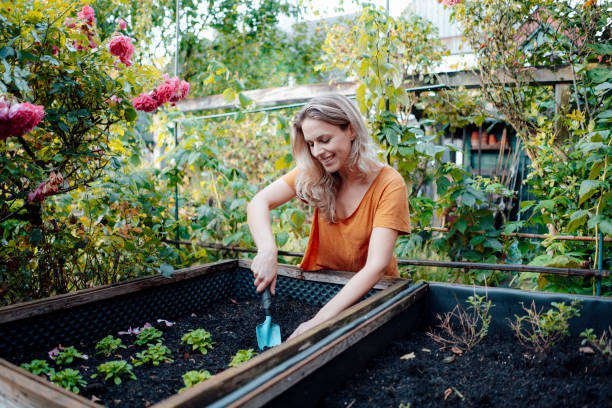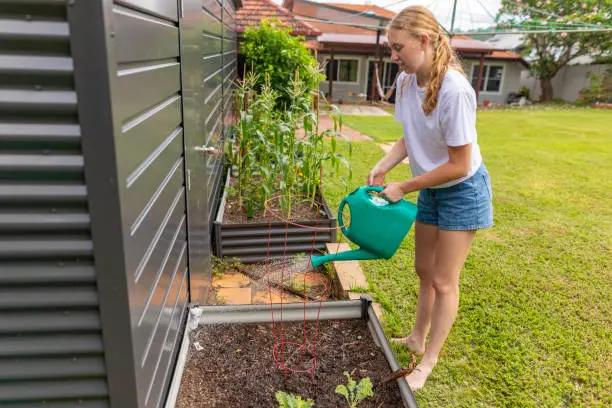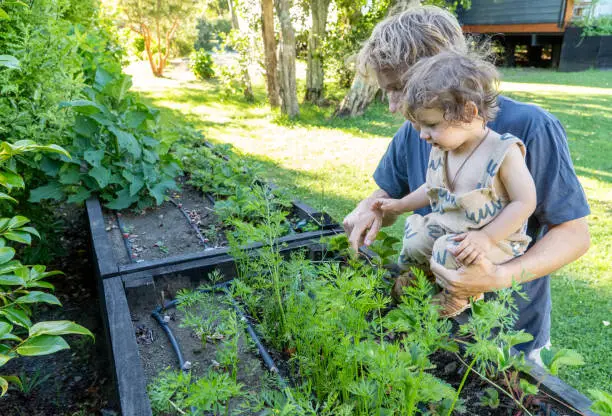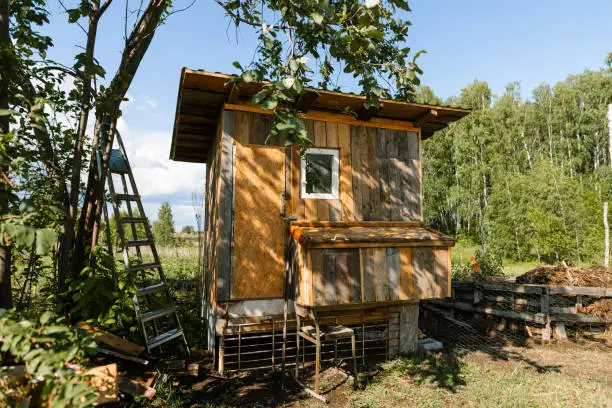Imagine walking out your back door to uncover a garden of edible plants. Backyard homesteading is accurate, not fiction. Wild plants in our yards are nutritious and safe to eat. Discover these hidden gems.
First, dandelions. Remember those yellow flowers you tried to blow away as a kid? It turns out they’re superfoods. Dandelions are edible from roots to blooms. The slightly bitter leaves, like arugula, offer tremendous flavor to salads. Just avoid pesticides and pet waste when picking them.
Our next choice is clover. Three-leafed beauties are lucky charms and healthful! Red and white clovers are edible, raw, or cooked. Use them in salads or tea for a gentle, sweet taste.
Plantains—not banana-like but broadleaf weeds—infest lawns everywhere. This hardy plant has been used in herbal medicine for generations and is tasty. Older leaves are more rigid and should be cooked, but young ones can be eaten raw.
Chickweed is another underappreciated backyard gem. Low-growing with tiny white blooms and spinach-flavored leaves. It works well with salads and pesto.
Instead of a bothersome weed, purslane is a nutritional powerhouse rich in omega-3 fatty acids. Its luscious leaves add zest to salads and stir-fries.
With its heart-shaped leaves and lemony taste, wood sorrel adds freshness to any cuisine. However, moderation is advised because oxalic acid is toxic in large amounts.
See lamb’s quarters grow wild? This spinach relative is rich in vitamins A, C, calcium, and iron, making it a great leafy green!
Remember that violet leaves and flowers are edible! Sprinkled on salads or desserts, they offer color and nutrients.

Also, garlic mustard is an invasive species that’s tasty! Its garlicky leaves benefit pestos and sautés.
Let’s talk safety because eating random greens without awareness is risky:
1) Positive Identification: Double-check before eating wild plants.
2) Stay away from roadsides and chemically treated areas.
3) Start Small: Add new foods slowly.
4) Ask local foragers or botanists for help identifying the problem.
Have you got kids? Start an educational journey! Teach kids that nature gives food if we know where and what to look for! Remember my friend Joe, who thought poison ivy berries were edible? Do not imitate Joe!
Homesteading in the backyard involves gardening and connection with nature. As you pluck weeds, realize that some may go on your plate rather than in the compost!
There you have it—a beginner’s guide to undiscovered lands outside your home, complete with potential dinners.
Wild Foods: Safely Harvesting and Using Nature’s Gift in Your Backyard Homestead
Imagine walking out your back door to uncover a garden of edible plants. Sounds like a dream. It’s more likely than you believe. Wild food gathering is fun and fulfilling. The art of picking green things is more than just picking them.
First, know your plants. Would you eat a grocery store item without knowing what it is? The same rule applies. Buy or download a field guide or app to identify wild foods. PlantSnap and PictureThis can save lives.
Consider dandelions. Although most people view them as weeds, they are nutritious powerhouses. Dandelions are delicious from root to blossom. Add the leaves to a salad for a bitter taste, or make tea from the roots.
Clover is another backyard beauty. Three-leafed beauties aren’t simply fortunate charms; they’re fantastic in salads and soups. Choose white clover, not deadly yellow sweet clover.
Realistically, safety comes first! Always verify food safety before eating. Poisonous plant resemblers might land you in the hospital or worse. Mushrooms are tasty if done right but poisonous otherwise.
When wholly developed and white inside, puffball mushrooms don’t have many harmful twins, making them safe; after cutting it open, eat one that’s pure white with no gills or cap structures.
Always harvest wild edibles from clean regions, away from roadsides and pollutants. Would you season your salad greens with automobile exhaust?
Because eating raw leaves is only sometimes tasty or safe, let’s talk preparation. Nettles taste great cooked but sting badly uncooked. After a short boil, enjoy them in soups or stews to neutralize their stinging hairs.

Remember burdock? That plant with unpleasant burrs on everything? When cooked properly, its roots taste like earthy potatoes with an artichoke flavor.
And remember berries! Blackberries grow wild along fences and hedgerows. They’re great for jams, pies, or summertime munching.
It happens—even expert foragers make blunders! Taste a little of any new plant to check for allergies or bad reactions before eating it.
Have you ever heard of plantain? Your yard is probably covered in a low-growing weed, not a banana! Crushed into a poultice, it treats minor cuts and stings and works great in salads when young and sensitive.
Another pro tip: forage sustainably! Keep some plants so they can flourish and provide food year after year. Like borrowing from nature’s pantry—don’t take everything!
For those who prefer to explore, wild garlic contributes great flavor without dominating dishes like its cultivated relative.
Another helpful herb, wild mint, grows practically everywhere (sometimes too much!) and adds flavor to savory recipes and teas.
Tooltip: A pocketknife simplifies harvesting without hurting plants, but always sanitize it!
Including kids? That’s a great idea! They learn about nature and survival skills (plus, most youngsters adore playing outside). Just watch what they pick—they’re not as picky!
People prefer their treasures to spoil quickly, so let’s talk storage! Most greens should be used within days, although they can survive longer in plastic bags in the fridge crisper drawer covered loosely with damp paper towels.
Roots like burdock are stored well in cold, dark areas like carrots, while berries freeze single on baking pans before transferring to freezer bags (no clumping!).
So there—a quick tour of securely picking wild vegetables from your backyard homestead! With knowledge and gloves, explore nature’s gifts, which have been patiently waiting underfoot.
Imagine strolling out your back door to find an edible garden. Homesteading in the backyard is real. Yard wild plants are healthy and safe to eat. Find these treasures.
First, dandelions. Remember those yellow flowers you tried to blow away as a kid? They are superfoods. The roots and flowers of dandelions are edible. The slightly bitter leaves, like arugula, complement salads well. Avoid insecticides and pet waste when picking.
Our next pick is clover. Three-leafed beauties are lucky and healthy! Red and white clovers are delicious raw or cooked. For a delicate sweetness, use them in salads or tea.
Broadleaf weeds called plantains infest lawns everywhere. This tough plant has been utilized in herbal medicine for millennia and is tasty. Older leaves are more complex and should be cooked, while young ones are raw.
Another overlooked lawn gem is chickweed. It has small, white blossoms and spinach-flavored leaves. It pairs well with pesto and salads.
Omega-3-rich purslane is a nutritional powerhouse, not a weed. Its lush leaves spice up salads and stir-fries.
Wood sorrel’s heart-shaped leaves and lemony taste freshen any dish! Because oxalic acid is harmful in large concentrations, moderation is advised.





Leave a Reply
You must be logged in to post a comment.